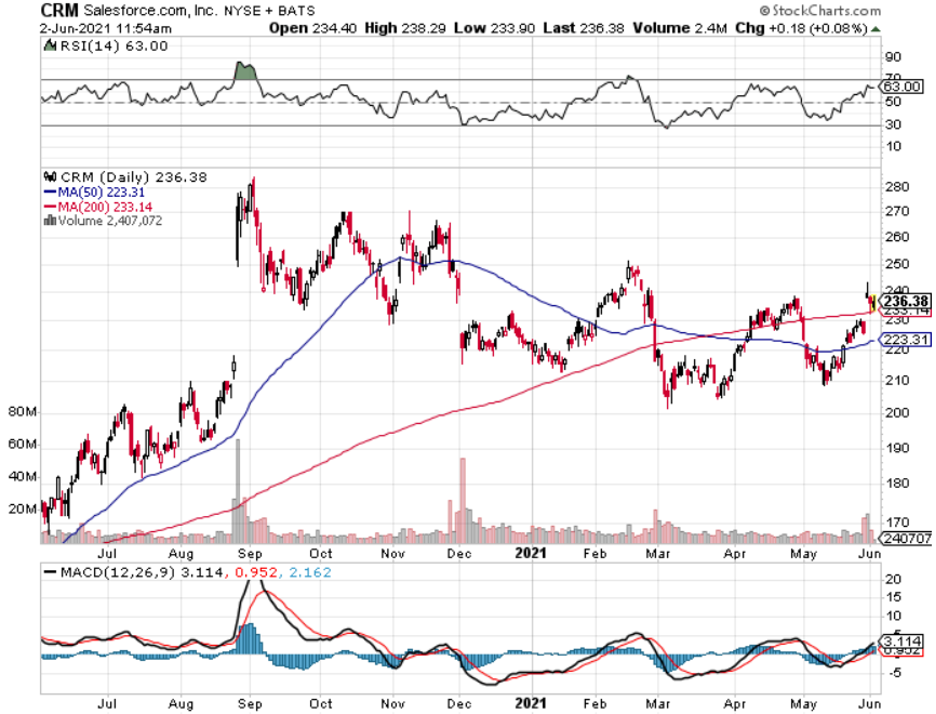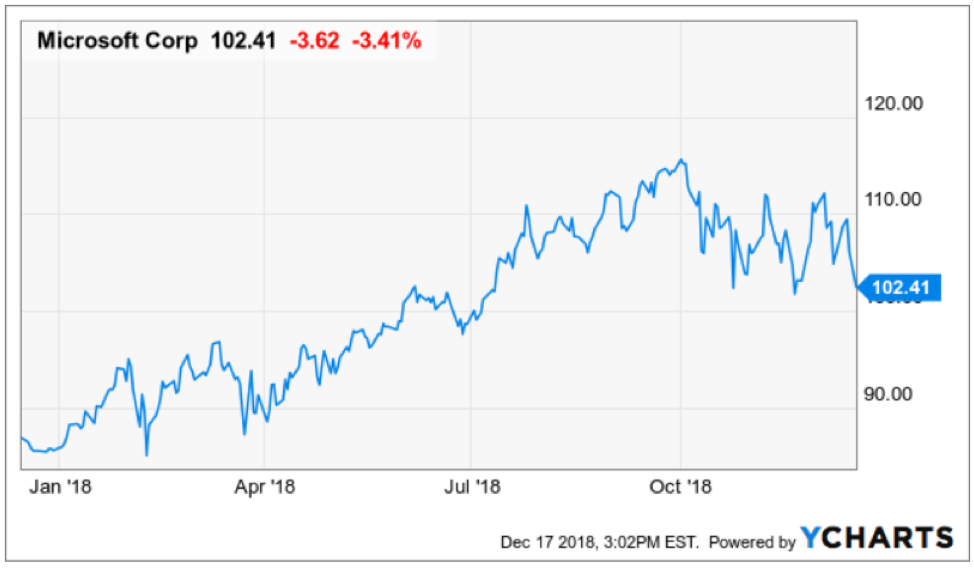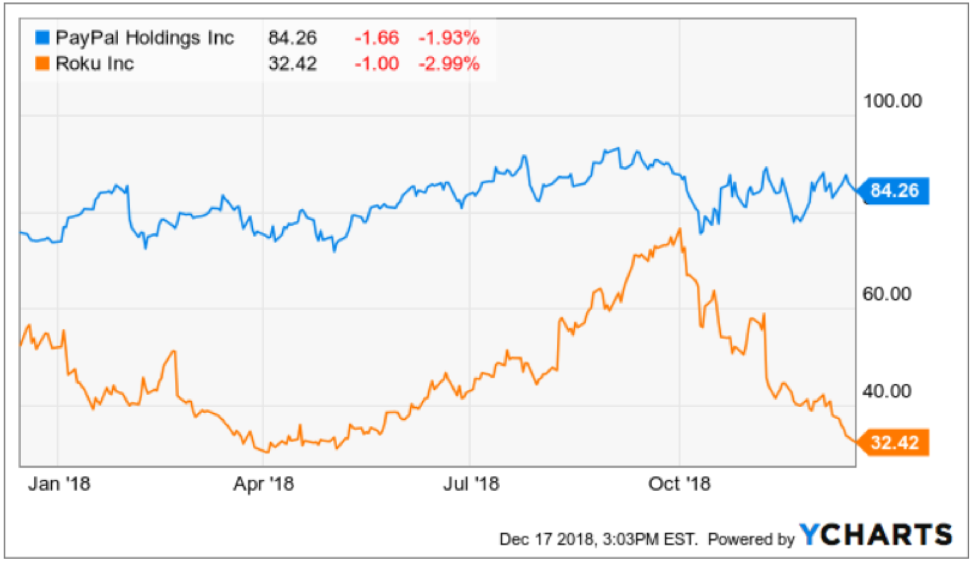Mad Hedge Technology Letter
June 2, 2021
Fiat Lux
Featured Trade:
(WHEN TO GET BACK INTO SALESFORCE?)
(CRM), (SONO), (HON), (SAP)

Mad Hedge Technology Letter
June 2, 2021
Fiat Lux
Featured Trade:
(WHEN TO GET BACK INTO SALESFORCE?)
(CRM), (SONO), (HON), (SAP)

Looking for that optimal balance between growth and profitability is the ideal but of course if a tech firm in that state is also leaning towards driving growth...
That company is Salesforce (CRM) and it looks attractive now after pulling back from its peak.
Investing in growth, especially in this insatiable demand environment, is simply the best thing a tech firm can do for a company.
That said, I am also a staunch believer that a focus on discipline makes for a stronger and more durable company.
Over the long term, I believe tech firms need to be able to deliver both revenue acceleration and versatility in its revenue acceleration.
That shows up for Salesforce in the $3.2 billion in cash flow on $5.96 billion in revenue which adds up to being up 74% year over year.
CRM’s numbers reflect a strong performance since the onset of the public health situation and their operating margin is producing almost as if it was completely redesigned from the bottom up.
CRM has raised its operating margin to 18% and they are on track to doing $50 billion by 2025.
Then there are unbelievable stories to digest that make readers understand the true power of CRM.
The Sonos (SONO) story is just one to absorb — they just had this 84% growth when they went to consumer using CRM products.
More importantly, how to integrate operations with a cloud platform is at the forefront of every CEO’s thinking.
This takes looking at the trends of this past year and again, the individual stories where CRM has made that big difference, like the Honeywell (HON) story when they shifted 7,000 salespeople from in-person to virtual customer meetings — customer meetings aren't going back to conference rooms only.
Then when the business environment dictates that CRM is helping through the Service Cloud, together with Field Service and Experience Cloud to enable Honeywell to seamlessly dispatch technicians for on-site product maintenance and proactive asset management, connected service partner experiences, and customer experience for scheduling appointments and instantly solving troubleshooting problems.
It’s field service capability that helped CRM to amplify an already close-knit relationship with Honeywell, and that's when management started to collaborate and say, wow, we could bring this to the aviation business in Honeywell to transform and streamline the work they do via the cloud.
To succeed in the all-digital work-anywhere world enabling you to digitize your entire customer experience and get back to growth is the overarching goal in this incredible 2021 economy.
The outperformance really stretches across the portfolio. When we talk about the fact that of the seven-figure deals, they, on average, included more than four of CRM cloud services, meaning they are not selling individual products.
CRM’s AI Einstein started doing over 100 billion predictions per day. And it's a great example of these platform investments that CRM did multiple years ago that customers and the whole economy go digital are benefiting from.
It means every email is more personalized and every e-commerce you paid for is suited to your interest and your needs, driving growth and success for customers.
MuleSoft is now doing 4.86 billion integration transactions every day. That is up 28% quarter over quarter.
Integrating these legacy systems so customers can move faster in the face of an economy that’s shifting more rapidly than ever before shows the importance of CRM’s acquisitions as it relates to the overall value proposition of Customer 360.
Total revenue for the first quarter was $5.96 billion, up 23% year over year and CRM’s vertical strategy continues to align products to strategic industries.
In particular, we saw strength in the public sector, which continues to accelerate as governments around the world turn to Salesforce Solutions. Service Cloud demonstrated another quarter of incredible growth at scale with Q1 revenue of $1.5 billion, growing 20% year over year, and Tableau continues to perform well.
In Q1, Tableau was in eight of CRM’s top 10 deals for the company and in more than 60% of seven-figure plus deals.
The company expects Q2 revenue of $6.23 billion or approximately 21% growth year over year and CRM even raised annual revenue guidance by $250 million.
They are about to pass SAP as the largest enterprise applications company in the world. And all the analysts have their models. I know they track SAP and Salesforce.
It really shows the whole world is going digital, and customers are connecting with their customers in a new way, and everyone needs CRM to do it or get left behind.
They also need CRM’s analytics — they need integration and CRM just happens to be the leader in that area.
CRM has undergone an M&A consolidation after heavily paying for acquisitions. This earnings report signaled to investors to expect these headwinds to drop off towards the end of the year and since the stock market is forward-looking, CRM will start to transform into the buy the dip tech firm it was once before these expensive acquisitions took place.
Readers should keep an eye out for Salesforce for really any substantial pullback and long-term, this software company is a reliable revenue accumulator with a strong brand name.

Mad Hedge Technology Letter
December 18, 2018
Fiat Lux
Featured Trade:
(THE BIG TECHNOLOGY TRENDS OF 2019)
(MSFT), (AMZN), (BBY), (SONO), (ROKU), (ADBE), (AAPL), (BAC)

As an astute purveyor of technology, it is my job to share with you the upcoming tech trends of 2019.
Some might be easily discernable and some might be a headscratcher, but all must be tabbed up and considered in the current tech outlook that is unpredictable and fluctuating, to say the least.
Part of the moody tech sentiment has been influenced by a changeable macro landscape - the tech sector’s winter freeze was woefully volatile and unfairly capsized good companies with the bad.
There is no means to get around it – the administration's delicate situation as it relates to Beijing and the American tech sector is front and center, and any movement of tech stocks must carefully absorb the ongoings from this complicated relationship.
The number of obstacles that confront this sensitive situation means that the 90-day window granted to solve the trade quagmires appear too brief of a timeframe to really knock out every single disagreement on the table.
The uncertainty over trade policy has really ruffled some of tech’s strongest feathers such as America’s pride and joy Apple (AAPL).
Apple is a great long-term story, but it does not preside over many short-term positive catalysts that can resuscitate the stock.
Analysts' downgrade after downgrade has been most harrowing for the chip components that make up Apple and other consumer electronic devices such as televisions and tablets.
This scenario is expected to extend into 2019 with Bank of America Merrill Lynch (BAC) slashing their price target by nearly 30% on electronics retailer Best Buy (BBY) then sticking the fork in them by downgrading it to underperform.
The premise behind this downgrade was that Best Buy carved out 25% of revenue from television sales and even though Adobe (ADBE) analytics has calculated record online sales in the holiday season, the follow-through has largely been without television sales participating in the seasonal bonanza.
Piggybacking on this trope, I believe electronic device sales could be hard-pressed to eke out growth next year and are set up for a rude awakening.
Therefore, it is sensible to extrapolate this idea out and assume that smart hardware competing against the big boys such as smart speaker firm Sonos (SONO), who I urged readers to stay away at $16 in September, is set up for a painstaking 2019.
To reread the story, please click here.
The stock is now trading at $11 and a mix of weakening consumer device demand layered with the domination that is the Amazon Alexa has pushed up this company’s risk-reward levels to untold heights.
Rounding out the negatives is that content streaming platform Roku has also debuted its own version of a smart speaker.
Roku (ROKU) is one of my favorite long-time tech plays but has been dragged down by the broader trade war because a portion of its revenue is still captured by hardware such as the new speakers and Roku OTT boxes.
Differing from Apple, Roku earns most of their revenue from targeted ads on their proprietary platform, and this is its reason why most investors are in this stock that is set to capture a secular migratory wave of cord-cutters traversing to online streaming.
However, Roku TVs made by Chinese company TCL still draw in small portion of revenue and even though the China revenue is not as high on a relative basis as Apple’s 20%, the stock has floundered in the short-term.
If disruptors such as Roku can get hit savagely with a small portion of revenues from China, then I am convinced that any tech investor going into 2019 should stay away from hardware and hardware that is made in China.
The consensus is that the drawn-out trade war could become the X-factor in the 2020 election because the Chinese are willing to wait for the next guy on the carousel searching for a better deal.
If you thought Chinese supply chains had a tough time of it in 2018, then 2019 is poised to be even more treacherous.
What 2018 convincingly demonstrated was that the late economic price action is getting into later and later stages boding negative for tech stocks.
To construct a healthy tech portfolio going into 2019, the change in the tech partiality has made the pivot towards software much more important.
Investors need to mitigate Chinese supply chain risk and seek out domestic software plays.
That should be the playbook as tech investors are on pins and needles going into the new year.
The domestic economy is robust and tech investors should be attracted to top-quality cloud-based enterprise stocks that are profitable.
The FANG story collapsing in our face signaled to investors that it is time to cautiously consider whether to invest heavily into deep loss-maker tech growth stories.
A healthy rotation to premium quality tech with superior cash flow is one way to lock up stocks and slyly deflect the external factors shaking up the tech momentum.
PayPal (PYPL) is a stock that has large international exposure mainly in Europe, but none in China whose 3-year EPS growth rate is 26% and still driving sequential sales in the mid-20% range.
This is just one example of a stock that has the correct make-up in a harsh and brutal tech environment planted with invisible booby traps.
And the most tell-tale sign that the American economy is in for an all-out software frenzy is the number of head-spinning investments from big tech companies looking to expand their footprint into new talent spots around the country.
First, the farcical Amazon beauty pageant came to an end with the e-commerce giant announcing a three-part package deploying new operations in New York, Washington D.C., and Nashville as the next phase of digital growth ramps up.
Google (GOOGL) followed that up by plopping a software office in New York City devouring a huge chunk of the Chelsea neighborhood aimed at doubling the 7,000 employees already there.
Then it was Apple’s turn choreographing a significant investment in Austin, Texas that will cost them $1 billion along with juicing up operations in Seattle, San Diego, and Los Angeles.
They weren’t finished there and promised to double down its presence in Pittsburgh, New York and Boulder, Colorado over the next three years.
It’s clear that big tech has finally understood that it’s not invincible and milking the China supply chain for all its worth is now a taboo business practice that has bipartisan support firmly against it.
Like I said before, the trade war came 1-2 years too early for Apple, and these headline-grabbing talent investments in data centers and its staff underscore the sense of urgency to fully and comprehensively pivot towards a software and services company.
The transition has certainly been an excruciating process exposing the weak spots at a brilliant company at the worst possible time.
I blame CEO of Apple Tim Cook who is the operations expert in the building grappling with Apple overextending themselves in the Middle Kingdom that has come back to haunt him at night.
You would have thought that with the troves of big data on their hands, Apple’s consultants might have found a country allied with America to invest in such a massive supply chain.
This leads me to communicate with conviction that Microsoft (MSFT) is my favorite tech stock going into 2019 because it is the purest, scalable, high-quality software name with minimal hardware drag devoid of weak spots in its armor.
That was what the investment in GitHub for $7.5 billion was about, highlighting the value of owning the meeting place for coders, literally buying up a stash of over 28 million users and 57 million coding repositories in which 28 million are public.
Microsoft has also bought up six video game studios in 2018 attempting to capture a bigger piece of the pie for the video game market that has been throttled by Fortnite.
If the Microsoft baby gets thrown out with the bathwater, then the tech bear market is upon us in full force.
If you didn’t really believe content is king in 2018, then you will really feel the phenomenon further embedded into the economy and society in 2019.
Next year, almost all tech investments will result in more data centers and software engineers in the hope of pumping out the best content and data, whether it’s enterprise software, video games, or pure data storage.
In 2019, I am bullish on companies with a cloud-based bedrock able to grind out the best content in the world, backed by a strong balance sheet that dovetails nicely with a lack of China-based revenue exposure.
The uber-growth models could be taking a rest boding negatively for Uber, Lyft, and Airbnb who must convince a more skeptical tech audience with tighter purse strings as they inject yet another unique dimension into the tech world next year.


Legal Disclaimer
There is a very high degree of risk involved in trading. Past results are not indicative of future returns. MadHedgeFundTrader.com and all individuals affiliated with this site assume no responsibilities for your trading and investment results. The indicators, strategies, columns, articles and all other features are for educational purposes only and should not be construed as investment advice. Information for futures trading observations are obtained from sources believed to be reliable, but we do not warrant its completeness or accuracy, or warrant any results from the use of the information. Your use of the trading observations is entirely at your own risk and it is your sole responsibility to evaluate the accuracy, completeness and usefulness of the information. You must assess the risk of any trade with your broker and make your own independent decisions regarding any securities mentioned herein. Affiliates of MadHedgeFundTrader.com may have a position or effect transactions in the securities described herein (or options thereon) and/or otherwise employ trading strategies that may be consistent or inconsistent with the provided strategies.
This site uses cookies. By continuing to browse the site, you are agreeing to our use of cookies.
OKLearn moreWe may request cookies to be set on your device. We use cookies to let us know when you visit our websites, how you interact with us, to enrich your user experience, and to customize your relationship with our website.
Click on the different category headings to find out more. You can also change some of your preferences. Note that blocking some types of cookies may impact your experience on our websites and the services we are able to offer.
These cookies are strictly necessary to provide you with services available through our website and to use some of its features.
Because these cookies are strictly necessary to deliver the website, refuseing them will have impact how our site functions. You always can block or delete cookies by changing your browser settings and force blocking all cookies on this website. But this will always prompt you to accept/refuse cookies when revisiting our site.
We fully respect if you want to refuse cookies but to avoid asking you again and again kindly allow us to store a cookie for that. You are free to opt out any time or opt in for other cookies to get a better experience. If you refuse cookies we will remove all set cookies in our domain.
We provide you with a list of stored cookies on your computer in our domain so you can check what we stored. Due to security reasons we are not able to show or modify cookies from other domains. You can check these in your browser security settings.
These cookies collect information that is used either in aggregate form to help us understand how our website is being used or how effective our marketing campaigns are, or to help us customize our website and application for you in order to enhance your experience.
If you do not want that we track your visist to our site you can disable tracking in your browser here:
We also use different external services like Google Webfonts, Google Maps, and external Video providers. Since these providers may collect personal data like your IP address we allow you to block them here. Please be aware that this might heavily reduce the functionality and appearance of our site. Changes will take effect once you reload the page.
Google Webfont Settings:
Google Map Settings:
Vimeo and Youtube video embeds:
